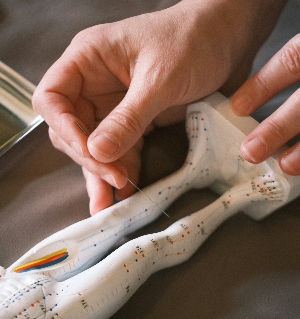The Benefits of Whole-Systems Traditional Chinese Medicine Therapy in Improving IVF Outcomes
- Phoebus Tian

- Apr 2, 2023
- 3 min read
Updated: Mar 18, 2025

In vitro fertilization (IVF) is a complex assisted reproductive technology (ART) that offers hope to couples experiencing infertility. However, its success rates vary due to multiple factors, including maternal age, egg quality, and overall reproductive health. Whole-Systems Traditional Chinese Medicine (WS-TCM) therapy, which integrates acupuncture, herbal medicine, dietary therapy, and lifestyle modifications, has been increasingly recognized as a complementary approach to enhance IVF outcomes.
A new study published in the European Journal of Integrative Medicine has found that whole-systems traditional Chinese medicine therapy can have a positive impact on in vitro fertilization (IVF) and embryo transfer outcomes.
The retrospective cohort study was conducted by researchers from the First Clinical College and Reproductive Center of Integrated Medicine at Shandong University of Traditional Chinese Medicine. The study analyzed data from 2,733 patients who underwent IVF and embryo transfer between 2018 and 2022.
The basis of all treatments relies on the principle of the cyclical changes of "Yin and Yang" in the Kidney and the fluctuations of "Qi and Blood" in the uterus. These cycles are divided into four phases: the menstrual phase (cycle days 1-3), the follicular phase (cycle days 4-12), the ovulation phase (cycle days 13-14), and the luteal phase (cycle days 15 until the onset of menses).
The traditional Chinese medicine therapy used in the study included acupuncture, herbal medicine, dietary therapy, and lifestyle recommendations. The researchers found that patients who received this whole-systems approach had higher rates of successful embryo implantation, pregnancy, and live birth compared to those who did not receive traditional Chinese medicine therapy.
The treatment approach varied depending on the menstrual cycle phase. During the menstrual phase, the focus was on normalizing menses and reducing dysmenorrhea, if present. In the follicular phase, the goal was to regulate reproductive hormones and support the growth of the endometrium and follicles. In the ovulation phase, treatment was aimed at inducing ovulation. The luteal phase treatment targeted the regulation of hormones to improve luteal function. Additionally, stress and anxiety reduction were sub-objectives throughout the entire menstrual cycle as part of the treatment. The treatment plan was tailored to the patient's individual needs and TCM pattern diagnosis but ultimately aimed to support the patients.
The Erzhi Tiangui (二至天癸) decoction was provided before gonadotropin administration. The formula was individually adjusted for each patient based on their own conditions. Acupuncture treatment was performed every 48 hours until the day of embryo transfer, following the end of the menstrual cycle. Points selection: RN12, RN4, ST25, KI12, EX-CA1, BL32, KI3, BL23, SP6, LR3, DU20, Yin Tang.
The findings suggest incorporating traditional Chinese medicine therapy into IVF treatment can improve patient outcomes. It may improve the cumulative live birth rate for females undergoing IVF -ET when administered as an adjuvant treatment. This approach is safe, non-invasive, and cost-effective."
The study has important implications for couples struggling with infertility who are seeking alternative or complementary treatments to conventional IVF. Traditional Chinese medicine has been used for centuries to treat a variety of health conditions and is gaining popularity as a complementary therapy in Western countries.
While more research is needed to confirm these findings and determine the optimal timing and duration of traditional Chinese medicine therapy for IVF patients, this study provides promising evidence for its potential benefits.
The authors note that their study has some limitations, including its retrospective design and lack of a control group. However, they hope that their findings will encourage further research into the use of traditional Chinese medicine in reproductive health care.
Overall, this study adds to the growing body of evidence supporting the integration of traditional Chinese medicine into modern medical practice.
Song, J.-Y., Dong, F.-Y., Wu, Z.-J., Ma, Y.-X., & Sun, Z.-G. (2023). Impact of Whole-Systems Traditional Chinese Medicine Therapy on In Vitro Fertilization and Embryo Transfer Outcomes: A Retrospective Cohort Study. European Journal of Integrative Medicine, 102246. https://doi.org/10.1016/j.eujim.2023.102246



Comments